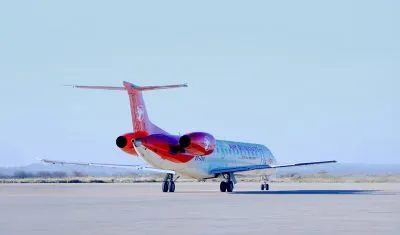Olam started its journey in Africa over 3 decades ago. Today, we are present in 22 African countries where our supply chain includes procurement, exports, imports, farms, and plantations, processing as well as packaged foods manufacturing and packaging. We continue to invest in our small- holder producer networks in Africa, supporting them through field schools, interest-free micro-fi- nance, inputs such as fertiliser and seedlings, and social investments such as health centres and schools.
Why is Olam committed to sustainable food systems?
Today, pressing issues face the food and agricultural industry: In Africa, growing incomes combined with rapid population growth are fuelling food demand across the continent. Re- search shows that while food production has increased globally by 145% over the last 40 years, food production in Africa has fallen by 10% since 1960, though the continent still possesses 65% of uncultivated arable land. e continent’s capacity to become self-sufficient relies heavily on unlock- ing its agricultural potential.
Delivering sustainable food systems is central to addressing these challenges and through our on-the-ground understanding and refreshed core purpose to ‘Re-Imagine Global Agri- culture and Food Systems’, Olam is focused on three key areas – Prosperous Farmers & Farming Systems, Re-generation of the Living World and riving Communities.
Does technology have all the answers?
Technology isn’t a panacea, but has huge potential to transform communities, and protect the environment for the better. For example, in Gabon we are using drones to map our plantations and survey thousands of hectares of High Conservation Value forest and buffer zones. At the same time, the Olam Farmer Information System (OFIS) is helping farmers make da- ta-driven decisions on when to plant, when to spray, how much water to use and the optimum time to harvest. e same data is allowing Olam to track the environmental and social footprint of agricultural produce.
Are smallholder farmers benefitting from this digital revolution?
Yes, some of the biggest benefactors are those in rural communities but it can be more complicated. With our vast network of farmers living in the most remote areas across the African continent, it has always been a struggle to easily access farmer information until OFIS.
The OFIS can solve the problems by analysing data from many different smallholder farms to create personalised Farm Development Plans (FDP), which set out recommendations on crops, fertilisers and smarter farming practices.
Connecting global food manufacturers to African farmers via AtSource
AtSource is a sustainable sourcing solution that provides Olam’s global food customers with visibility into the journey of their ingredients, from the farmer group in Africa where they were produced, all the way to the manufacturer.
By revealing where the community needs lie and where efforts can be prioritised, this transparency brings global food companies closer to the thousands of African farmers in Olam’s supply chain; enhancing their ability to assess and positively influence livelihoods and promote sustainable agriculture.
Among the first African supply chains available on AtSource are Cocoa from Ghana, Cashew from Ghana and Mozambique, Co ee from Côte d’Ivoire, Democratic Republic of Congo and Uganda, and Onion from Egypt.
In 2018, Olam mapped 180,000 farmers across 25 countries and generated 16,259 personalised FDPs. For the first time, thousands of farmers could implement a bespoke plan, improving their crop yield and quality, and earnings.
Take Muhammed Adams for ex- ample, a cocoa farmer for 25 years in Ghana who over the past two years has tripled his output from seven to 25 bags a er the OFIS management plan that was put in place helped him manage crop disease better, meaning less chemicals and more cocoa.
Are digital advancements benefitting farming communities?
Absolutely, some of the biggest impacts have been in communities. In Côte d’Ivoire, Olam’s Sustainable Cashew Growers Programme (SCGP) is implementing various actions to tackle food security risks and malnutrition, such as food crop support, livelihood diversification and nutrition education.
Digital apps such as Digital Origination are improving business for farmers, allowing them to check crop prices and trade their goods online with payments going direct to their mobile wallets. We have already seen this technology have a positive impact during a pilot scheme with cashew farmers in Ghana.
Where is the future of technology heading in the industry?
is is an exciting time. Digital developments are set to make major improvements to sustainable farming. We want to continue to be at the forefront of this revolution, widening the reach of our platforms as much as possible.
Want to continue reading? Subscribe today.
You've read all your free articles for this month! Subscribe now to enjoy full access to our content.
Digital Monthly
£8.00 / month
Receive full unlimited access to our articles, opinions, podcasts and more.
Digital Yearly
£70.00 / year
Our best value offer - save £26 and gain access to all of our digital content for an entire year!

 Sign in with Google
Sign in with Google 




